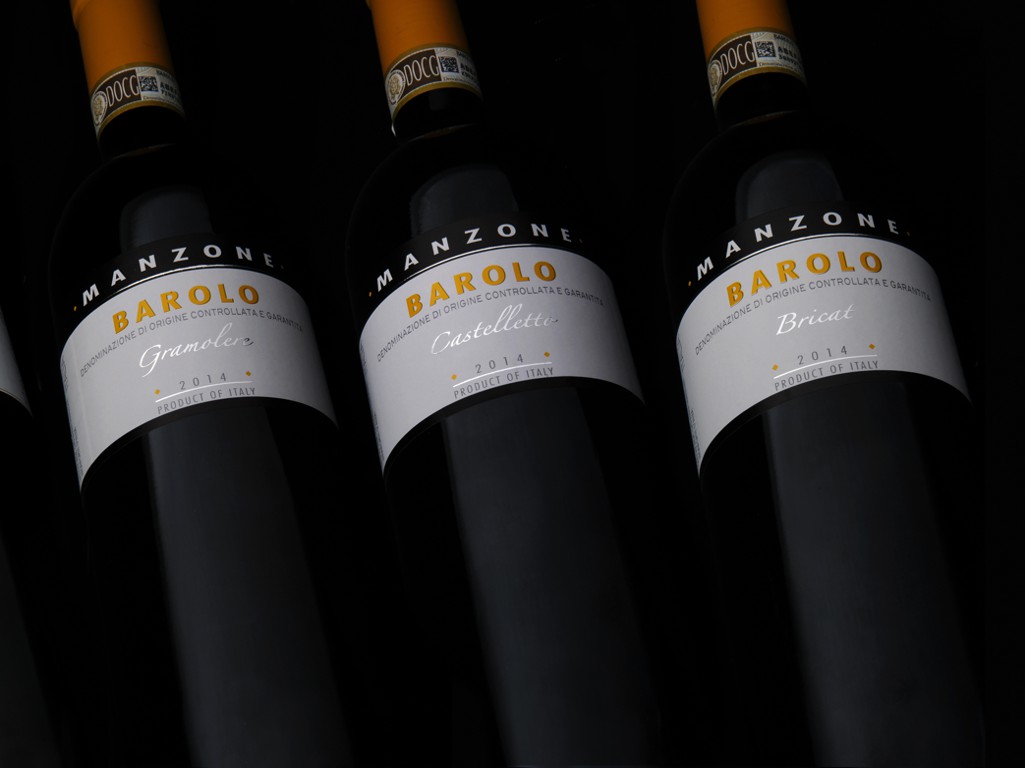Barolo DOCG: A wine with history and territory
The vine is a particularly unique plant. It thrives on soils where most other plants struggle to grow, requires years of care before yielding its first fruits, and needs constant attention to remain healthy and productive. However, the fruit of the vine, the grape, is so extraordinary that it makes all the effort worthwhile.
The different grape varieties, their relationship with the soil from which they draw nutrients, and their exposure to the sun which affects the ripening of the clusters, produce extremely varied grapes. From these diverse fruits, practically infinite types of wine can be obtained.
For this reason, practically every region where vines can be cultivated has its unique and unrepeatable wine production. However, in some cases, like Barolo DOCG and particularly that of Manzone Giovanni, the exceptional quality of the product stems from a long history of work and dedication.
Many vineyards growing nebbiolo grapes around the village of Barolo were owned by the Falletti marquises in the 19th century. It was from the impetus given by this noble family that the wine, which now carries the name of this locality around the world, was born. The creation of this product is credited to Marquis Tancredi Falletti and especially to his wife, Juliette Colbert, better known in Italy as Giulia Falletti di Barolo, a descendant of a family of winemakers for the French court.
As early as 1830, the Falletti of Barolo had hired Paolo Francesco Staglieno, the most famous oenologist of the time, to give prestige to their nebbiolo. Thanks to the work of this expert, who also managed the vineyards of the Savoy family and Count of Cavour, and the organizational and promotional efforts of Marchesa Giulia, Barolo became a wine known in all European courts as a symbol of luxury and elegance.
Even though today Barolo’s price makes it accessible not only to royalty, the characteristics of this wine, with its ancient history, still make it a unique product of absolute excellence.
How to recognize a good Barolo?
When talking about DOCG wines, questions like this become very common, but it is not always easy to provide clear answers. There is no doubt that Barolo DOCG wine has well-defined characteristics: garnet red colour, complex olfactory scent with predominant fruity and floral tones, and an intense and persistent flavour. However, each vineyard, depending on the soil composition and geographical exposure, produces nebbiolo grapes with different characteristics, and consequently, the aromas and Flavors of Barolo DOCG produced in different locations vary significantly.
It thus becomes difficult to say how to recognize a good Barolo precisely because it is challenging to define characteristics of Barolo wine that are better than others.
For example, we at Manzone Giovanni winery produce three different types of Barolo from different vineyards: Barolo Castelletto, Barolo Gramolere, and Barolo Bricat. We must confess, though, that we would struggle to say which is the best. It is perhaps better this way: Barolo is a complex wine, and each of us appreciates some characteristics more than others. Those who love Barolo might prefer the scent of wild berries and tobacco in our Barolo Castelletto DOCG or the spicier notes of Barolo Gramolere DOCG, or even the walnut and chocolate notes typical of Barolo Bricat DOCG.
How many types of Barolo are there?
As we have seen, the characteristics of a Barolo wine vary significantly based on the vineyard producing the Nebbiolo grapes from which it is made. For this reason, in addition to the DOCG designation that characterizes all Barolos, an additional geographical mention is also allowed.
This designation allows distinguishing different types of Barolo and at the same time enhances the uniqueness of each territory. Currently, there are over 160 additional geographical mentions for Barolo, referring to vineyards in every part of the production area, which includes the entire territories of the municipalities of Barolo, Castiglione Falletto, Serralunga d’Alba, and partially those of La Morra, Grinzane Cavour, Monforte d’Alba, Roddi, Cherasco, Verduno, Novello, and Diano d’Alba.
Our winery, for example, produces with the additional geographical mention Castelletto and Gramolere, from which we also produce our Barolo Bricat DOCG.
As we have seen, Barolo wine has a long history, rooted in the territory from which it takes its name, and its aromas and flavours are so rich and intense that they allow for many variations on the theme, also indicated with a particular additional geographical mention of Barolo DOCG.
If you want to learn more about Barolo and immerse yourself in its world, we invite you to visit the Manzone Giovanni winery to get to know our company and, of course, taste our wines.


